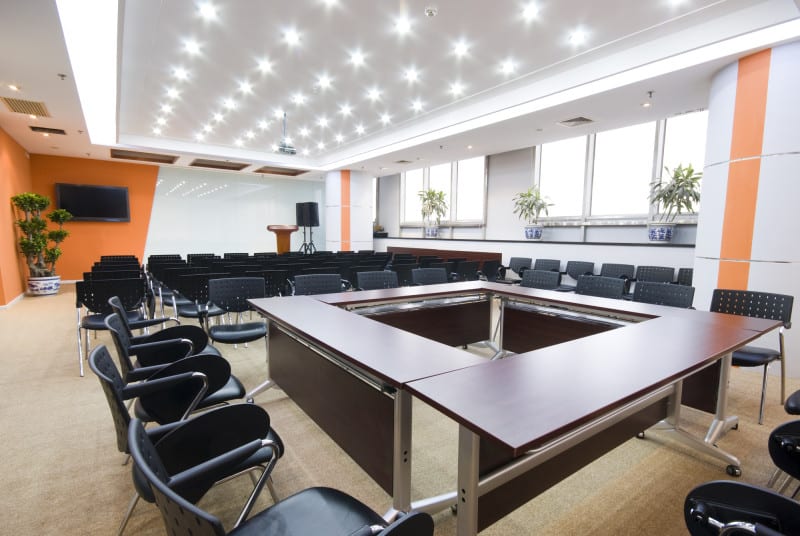If you’re looking for ways to save on energy costs and reduce your carbon footprint, implementing smart energy-saving lighting systems is a great place to start.
These systems are designed to optimize energy use while providing adequate lighting for your space.
Not only do they help you save money on your energy bills, but they also contribute to a more sustainable environment.
Smart energy-saving lighting systems are equipped with advanced technologies that help to reduce energy consumption.
These systems can be customized to meet your specific lighting needs, ensuring that you have the right amount of light in each room at all times.
Plus, they can be controlled remotely, allowing you to turn them on or off, dim them, or change their color from your smartphone or tablet.
With smart energy-saving lighting systems, you have complete control over your lighting, making it easy to save energy and reduce your carbon footprint.
Benefits of Implementing Intelligent Lighting Systems
You’ll be amazed at how much you can save on your energy bill by implementing intelligent lighting systems – after all, a penny saved is a penny earned!
The cost savings are significant, as these systems use sensors and algorithms to automatically adjust lighting levels based on occupancy and daylight levels. This results in less energy consumption and reduced costs.
In addition to cost savings, intelligent lighting systems have a positive impact on the environment. By reducing energy consumption, these systems help to lower carbon emissions and contribute to a more sustainable future.
They also provide a better user experience, as lighting can be customized to suit individual preferences and needs.
Maintenance requirements are also reduced, as the system automatically detects and alerts when a bulb needs to be replaced. Finally, security features can be incorporated into the system to provide added safety and peace of mind.
Key Components
The essential parts for making these innovative lights possible are the main components. LED technology is a crucial component of smart energy-saving lighting systems.
LED lights consume less energy and last longer than traditional bulbs. They also emit less heat, making them safer to use for extended periods.
With LED lighting, you can enjoy brighter light using a fraction of the energy needed for older lighting systems.
Motion sensors, daylight harvesting, and occupancy sensors are also key components of smart lighting systems. Motion sensors detect movement and turn on lights when someone enters a room.
Daylight harvesting adjusts lighting levels based on natural light levels, reducing energy usage during the day. Occupancy sensors detect whether a room is empty and turn off lights to save energy.
Wireless connectivity allows for remote and automated control of the lighting system.
With these components in place, a smart energy-saving lighting system can help you save money on energy bills while reducing your carbon footprint.
Energy Efficiency Features & Technologies
As you walk into a room, the lighting system adjusts automatically to the natural light levels, thanks to advanced technologies like smart sensors and daylight harvesting.
These systems allow for automated dimming and occupancy detection, which means that the lights only turn on when someone is present in the room. This not only saves energy but also extends the life of the light fixtures.
Another energy efficiency feature of smart lighting systems is power monitoring. This allows you to track energy consumption and identify areas where energy usage can be reduced.
By monitoring power usage, adjustments can be made to the lighting system to optimize energy savings without compromising on lighting quality.
Smart Lighting Control Strategies
Maximizing energy savings through control strategies is essential in achieving efficient lighting.
One of the most common strategies is the use of occupancy sensing, which detects movement and turns lights on or off accordingly.
This is particularly useful in areas with low occupancy, such as storage rooms, restrooms, and hallways.
By turning off the lights when they’re not needed, energy consumption can be significantly reduced.
Another effective control strategy is daylight harvesting, which utilizes sensors to adjust the lighting levels based on the amount of natural light available.
This helps to maintain a consistent level of illumination while reducing energy consumption.
Dimming capabilities allow for the adjustment of light levels based on the needs of the space.
By reducing the light output, energy consumption can be reduced, and the lifespan of the bulbs can be extended.
The use of zoning techniques allows for the control of light levels in specific areas, allowing for further customization and energy savings, and adjusting the color temperature can also have an impact on energy consumption, as warmer tones require less energy than cooler tones.
Successful Implementations
Implementing effective lighting control strategies can result in significant reductions in energy consumption and cost.
Real world examples of successful implementations include the installation of occupancy sensors, daylight harvesting systems, and time schedules.
These systems detect when a room is occupied or when natural light is available and adjust the lighting accordingly, resulting in energy savings of up to 60%.
In addition to cost savings, users report a positive experience with the improved lighting quality and convenience.
Another consideration for successful implementations is the environmental impact.
By reducing energy consumption, lighting control systems reduce greenhouse gas emissions and contribute to a sustainable future.
However, maintenance considerations should also be taken into account.
Regular inspections and updates may be necessary to ensure the system remains efficient and effective.
With careful planning and execution, smart energy-saving lighting systems can offer significant benefits for both the user and the environment.
Conclusion
Implementing smart energy-saving lighting systems offers significant cost savings, customization options, and environmental benefits.
These systems optimize energy consumption through advanced technologies and control strategies, resulting in reduced carbon emissions.
With careful planning and maintenance, smart lighting provides an efficient and sustainable solution for a greener future.




